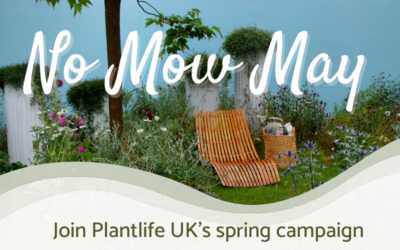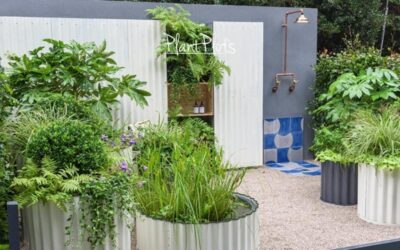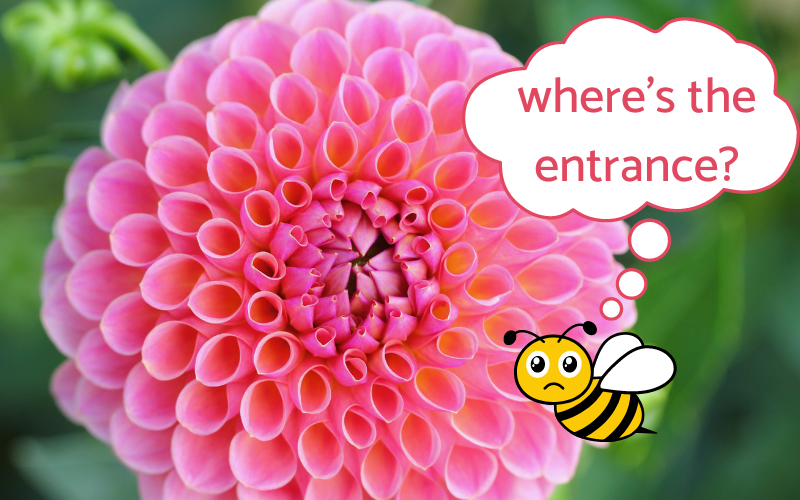
Bees V RHS – it’s time for the Bees to win.
The Royal Horticultural Society is an amazing institution. Its role is to promote gardening and educate current and future generations about gardening and all things horticultural. No one can argue that it does not fulfil this role admirably. However, the RHS has created a monster in the world of horticulture and it is time to put this monster back in its box. The monster is the RHS Award of Garden Merit, it pits the Bees against the world of horticulture – and it’s time for the bees to win!
What actually is horticulture?
Horticulture is defined as;
‘the cultivation of flowers, fruit, veg or ornamental plants & the science and art of cultivating such plants’
Herein lies the problem, that short phrase ‘ the science & art of cultivating such plants.
Humans are naturally inquisitive, we love to create, invent, modify and innovate. Horticulture is partly defined as a science, consequently, horticulturalists would be in dereliction of their scientific duty to not look to innovate or modify or change.
Horticulture is also defined as an art form, which drives passion and provides purpose for creating plants that look more beautiful.
This horticultural definition provides the justification for us to adapt and plant our garden with an increasingly varied range of plants. Science and Art further the knowledge and understanding of mankind, so therefore the application of science and art to plants must be equally beneficial.
This creates a monster, however, but one borne of another uniquely human trait; one-upmanship!
The RHS Award of Garden Merit
We are a judgemental society, all facets of our behaviour are judged in some way, whether we are successful business people, influential columnists or elite athletes, society provides a benchmark of standards by which others can judge.
In the UK, this standard is provided by the RHS’ Award of Garden Merit and what an influential monster it has become!
For a plant to be awarded an AGM it must pass the following criteria;
– Excellent for ordinary use in appropriate conditions.
– Of good constitution.
– Essentially stable in form and colour.
– Reasonably resistant to pests and diseases.
– Available to buy in the UK.
The AGM allows plants to be judged – which means all those ‘scientists and artists’ in commercial horticulture have a target to aim at and be judged on.
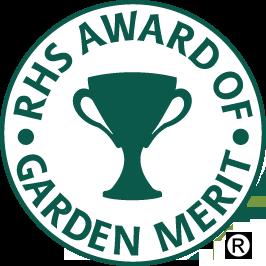
A target that, once achieved, provides them with a nice shiny gong of approval.
The AGM shouts out to gardeners across the country that this is a good plant. The plant-buying public can then purchase plants with confidence – the RHS has deemed this a ‘good garden plant’, so it must be ‘good’ in the garden.
The question is though – good for what?
The criteria for awarding an AGM in a way isolates and sanitises the role of the plant. It defines the benefit of the plant solely in terms of its interaction with humans.
For a plant to pass the test, it must invariably look good and be easy to grow. It must not look sickly or feeble and it must be convenient to the source. No other plant purpose is deemed important.
The monster this creates is driven by commercialism, companies can extol their ‘success’ at breeding plants by the number of AGM medals they hold. The AGM medal provides a profit premium for growers and an incentive to strive to create more plants worthy of the AGM.
So why is this a problem?
The result, well of the 200 or so new AGM awards for plants (excl veg and fruit) in 2016, approximately 8% of these plants were deemed ‘Perfect for Pollinators’ by the RHS.
This means, 92% of plants gaining an AGM medal were not deemed to be particularly helpful to pollinators!
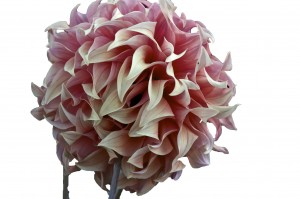
Incidentally, most of the new pollinator-friendly plants were Dahlia’s. Although many had extremely complex petal formations that would make it difficult for any bee to even get in!
An analysis of the RHS plant database reveals only 10% have both an AGM and a ‘Perfect for Pollinators’ logo.
Now it is not the case that all plants not bearing the Perfect for Pollinators logo have zero benefits to insects, of course, it doesn’t, but the trend is there for all to see.
If usefulness is not even on the AGM criteria, there is no incentive for plant breeders to create a useful plant!
What is the purpose of the AGM to the RHS?
In Rory Stuart’s book ‘What are Gardens for’ gardens, to be fully understood must be viewed in the context of culture. The RHS has historically demonstrated how both the science and art of horticulture have created plants of great beauty. It has displayed the prowess of the horticulturalist’s scientific and artistic ability with lavish shows and promoted the art of competitive show-casing of plants, flowers and vegetables. Thousands have flocked to these shows to see who has been the most successful. We all want to know which plant has been deemed the ‘best in show‘.
The culture created is all about spectacle and how well a plant performs – for us!
The AGM needs another overhaul, plants should not be judged so one-dimensionally. The purpose of plants, in fact, the only purpose of a plant is to reproduce themselves. The RHS are wrong to exclude the usefulness of a plant to its environment from the AGM criteria. After all, gardens are now an increasingly important part of the environment.
The horticultural culture of the RHS needs to evolve, just as nature does. We have created thousands of plants that look great, but contribute nothing other than aesthetics to a garden. In an age where we understand far more the negative impact humans have on our planet, it is an anathema to hand out ‘gongs’ of approval to plants that look good but offer little else.
So, how about some new RHS award for Garden Merit judging criteria?
– Excellent for ordinary use in appropriate conditions.
– Of good constitution.
– Essentially stable in form and colour.
– Reasonably resistant to pests and diseases.
– Available to buy in the UK
and




